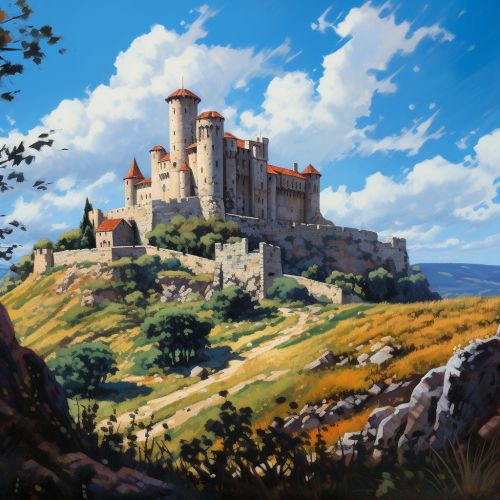Middle Ages
Introduction
The Middle Ages, also known as the Medieval Period, spanned from the 5th to the late 15th century. This era is marked by the collapse of the Western Roman Empire, the beginning of the Renaissance, and the discovery of the New World. The Middle Ages is divided into three periods: the Early Middle Ages, the High Middle Ages, and the Late Middle Ages.


Early Middle Ages
The Early Middle Ages (5th to 10th century) began with the fall of the Western Roman Empire and ended with the start of the High Middle Ages. This period is often referred to as the Dark Ages due to the relative cultural and economic regression that occurred in Western Europe following the decline of Rome.
Migration Period
The Migration Period, also known as the Barbarian Invasions, was characterized by the movement of various Germanic, Slavic, and other tribal groups within and into the dying Roman Empire. These migrations resulted in significant cultural, political, and demographic changes in the regions they affected.
Feudalism
Feudalism was a dominant social system in medieval Europe. The nobility held lands from the Crown in exchange for military service, and vassals were in turn tenants of the nobles, while the peasants (villeins or serfs) were obliged to live on their lord's land and give him homage, labor, and a share of the produce, notionally in exchange for military protection.
High Middle Ages
The High Middle Ages (11th to 13th century) was a period of great change in Europe. The introduction of new institutions, such as the university, and the flourishing of literature and art testify to the vitality and creativity of this era.
Crusades
The Crusades were a series of religious wars sanctioned by the Latin Church in the medieval period, especially the campaigns in the Eastern Mediterranean aimed at recovering the Holy Land from Islamic rule.
Gothic Architecture
Gothic architecture, an architectural style that flourished during the High Middle Ages, evolved from Romanesque architecture and was succeeded by Renaissance architecture. It originated in 12th-century France and lasted into the 16th century.
Late Middle Ages
The Late Middle Ages (14th to 15th century) was a period of decline and crisis. The calamities of the 14th century—the Great Famine, the Black Death, the Hundred Years' War, and the Peasants' Revolt, among others—had a profound effect on the culture and society of the time.
The Black Death
The Black Death was a devastating global epidemic of bubonic plague that struck Europe and Asia in the mid-14th century. The plague arrived in Europe in October 1347, when 12 ships from the Black Sea docked at the Sicilian port of Messina.
The Hundred Years' War
The Hundred Years' War was a series of conflicts waged from 1337 to 1453 by the House of Plantagenet, rulers of the Kingdom of England, against the House of Valois, rulers of the Kingdom of France, over the right to rule the Kingdom of France.
Conclusion
The Middle Ages was a complex and multifaceted era, marked by significant changes in all aspects of society. Despite the challenges and difficulties, it was also a time of great achievements and advancements that have significantly shaped the world we live in today.
